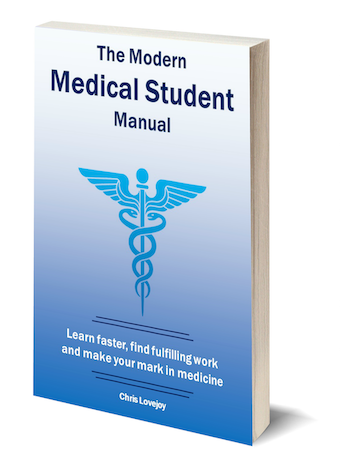Learning from Others in Medicine
During your medical degree, as you cycle through different rotations, you will meet some inspirational doctors. They may teach you things that stick with you for life. There are many things you can learn from an inspirational individual that you can’t learn from any textbook.
Below I’ve collated the best and most memorable pieces of advice that I receive from doctors during my time at medical school. Everybody will meet different teachers and learn different things during their medical school experience – I hope that by the end of your time at medical school you will have your own. These points are not meant to replace what you will learn, but rather to supplement the insights that you gain.
Wisest words
Neurox, not xerox
After missing a teaching session, I emailed the consultant neurologist who had run the session asking for a summary of the supervision or some notes. His one-line email reply was the above. This simple phrase has stuck with me and helped me realise the benefit of committing things to memory rather than keeping comprehensive notes.
(‘Neurox’ refers to the fact we should memorise things, as opposed to ‘xerox’ (the printer company) which would enable us to print out notes)
The first thing you prescribe to a patient is yourself
A psychiatrist explained how easy it can be to think medicine is all about what you do regarding a patient’s management; what drug you prescribe or operation you recommend. However, your interaction with them can have a lasting impact so it’s important to be friendly and to inspire confidence.
The power of observation
One GP emphasised how much can be gained from observation – of doctors, as both positive and negative role models, and of patients:
“Find a good role model. Observe them; what is it that they say? What is it that they do? Little things can make a huge difference. Likewise, notice doctors that make you think ‘I never want to be like that’; What is it that they said and did which had a negative impact on patients?”
“With patients, observe like a detective - you can gain a huge amount from their expression, posture, gait, breathing, and other nonverbal signs. For example, you can pick up a chest problem by noticing uneven breathing or depression by the lowered gaze and the slumped posture.”
Always ask why
A cardiac surgeon explained that his habit of asking why was one reason for his successful career.
“Keep asking why. Some people will get annoyed. They may realise they don’t actually know why. But keep asking and you will get to the bottom of things.”
Never use ‘executed’ when you can use ‘did’
Keep it simple in the way you use your language as the purpose is to communicate a message. Don’t use complicated words to sound smart as you will limit your audience. This is true when talking to your patients and when writing to share ideas.
Know the meaning of every word that you use
It is easy to use words without being sure of their meaning. A doctor told me this in a vascular clinic, after I wasn’t sure exactly what an ‘ulcer’ is (it is the loss of epithelium).
When a patient comes to you with a ‘functional’ problem, it’s because they have a problem which they can’t deal with on their own.
Have one of your own? Drop me an email at chris@medicalstudentmanual.com if you’d like me to include it on this page.
This is a chapter from The Modern Medical Student Manual. A full list of chapters are below:
- Introduction: From That Day To This Book
- Chapter 1: Medicine from Fifty Thousand Feet: Perspective, Targets and Limits
- Chapter 2: The Fundamentals of Fast Learning - Part 1 and Part 2
- Chapter 3: Mastering Clinical Medicine - Part 1 and Part 2
- Chapter 4: Increasing our Impact (and the power of Self-Education) - Part 1 and Part 2
- Chapter 5: A Scientific Approach to Research - Part 1 and Part 2
- Chapter 6: Commanding Clearer Communication - Part 1 and Part 2
- Conclusion
Plus Bonus Chapters:
- Bonus Chapter 1: If Medicine Gets You Down
- Bonus Chapter 2: Is Medicine Right For Me?
- Bonus Chapter 3: Memorisation Techniques (by Dr James Hartley)
- Bonus Chapter 4: Learning from Others in Medicine


Comments powered by Disqus.